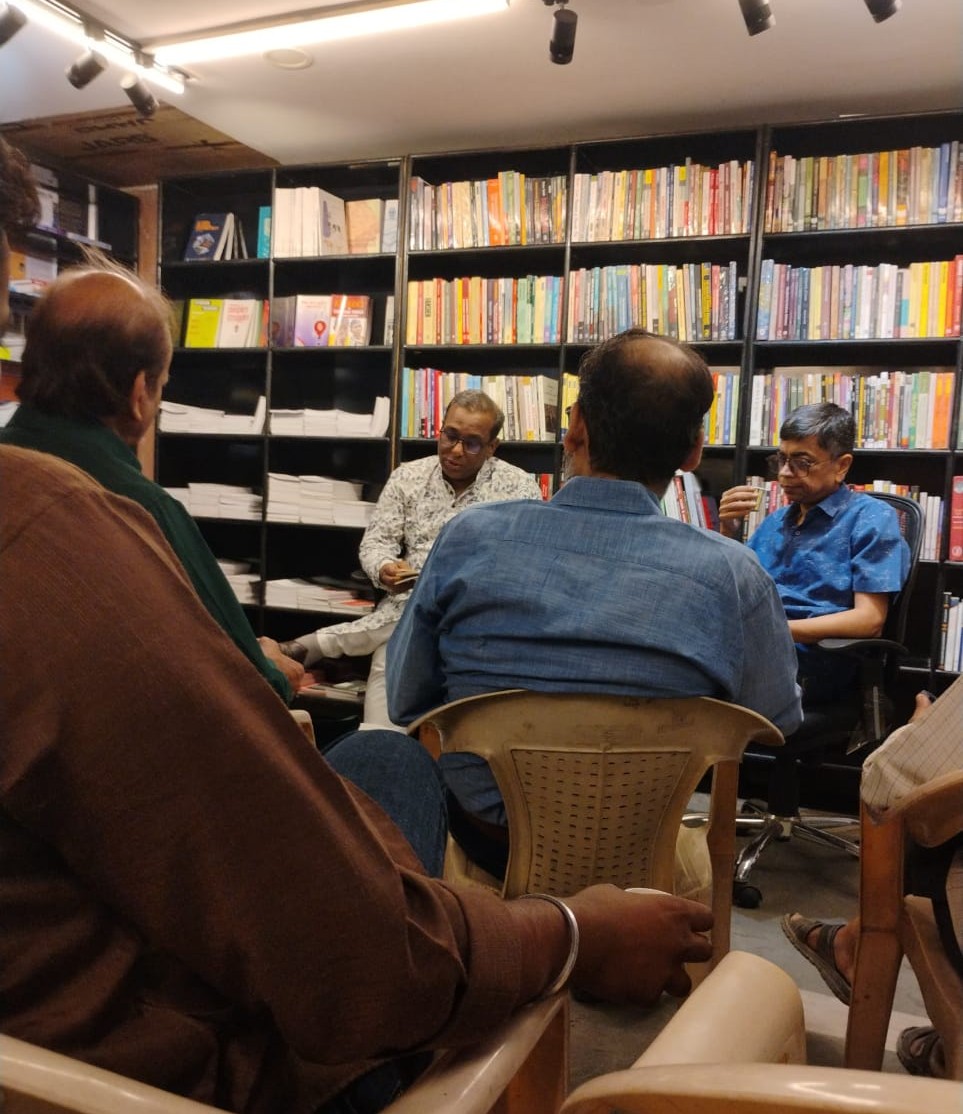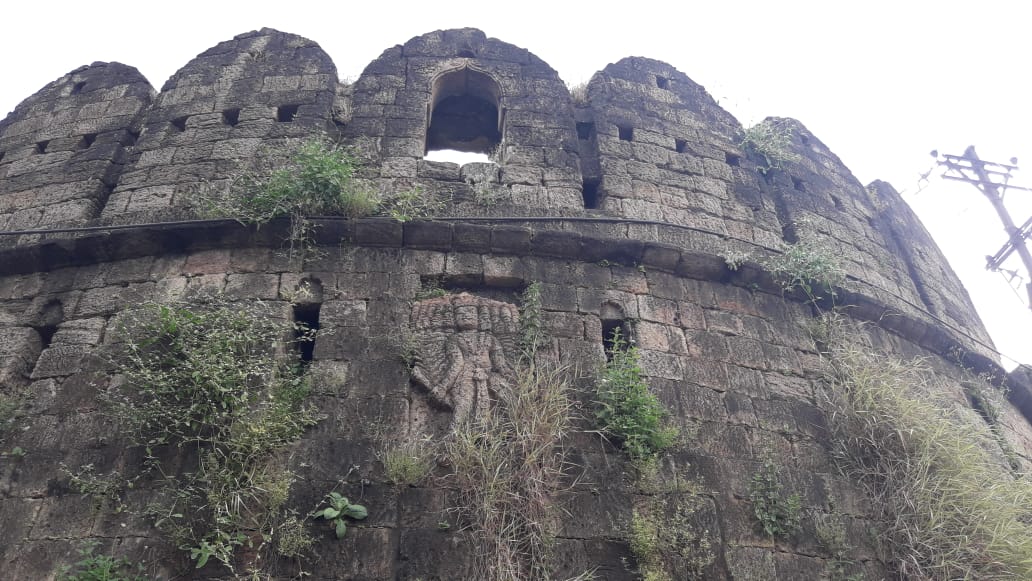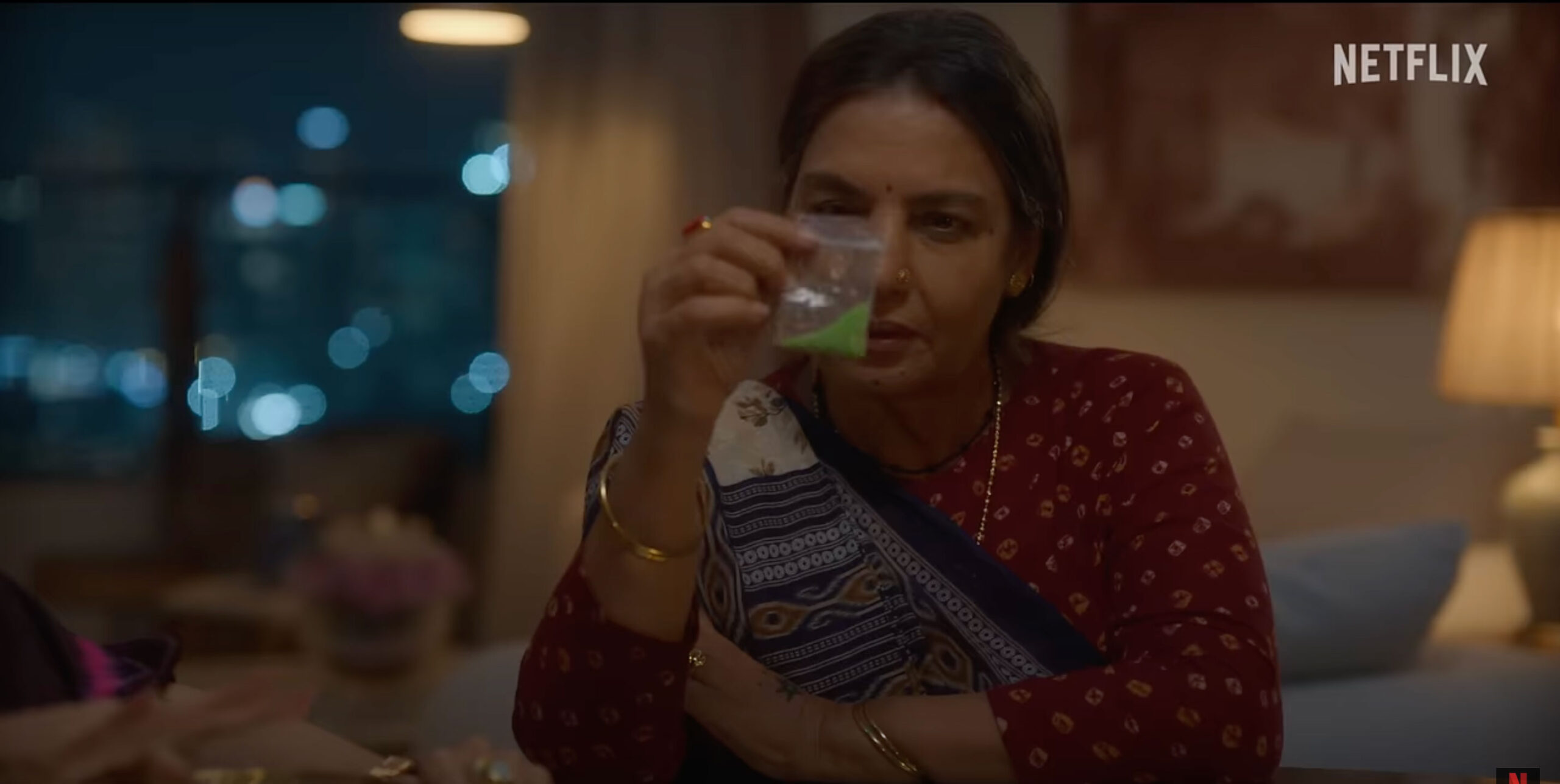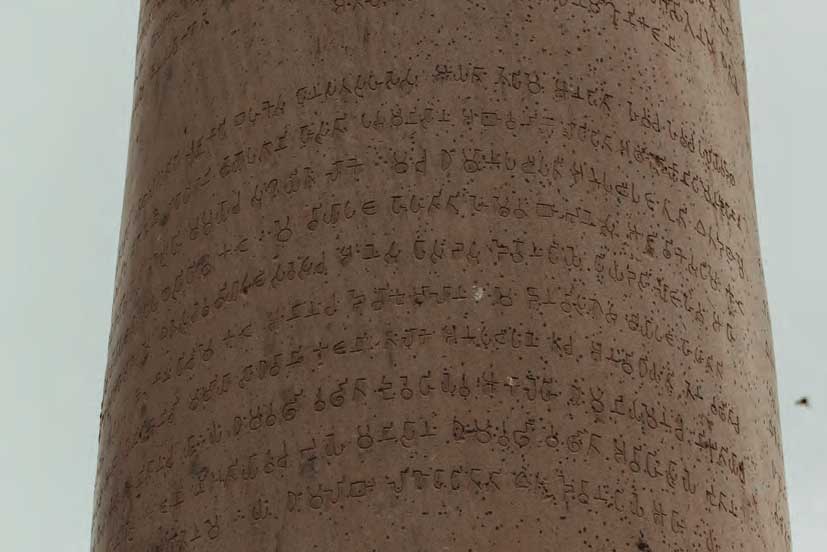Around 1990, the concept of Dalit literature was transplanted in Hindi from the “fertile” Marathi. The concept of OBC literature, which has become a talking point now, also has its origins in Marathi. Mega literary conventions were organized in Maharashtra on this concept in 2006 and 2008. Here, we are reproducing a small booklet that was published and distributed among the delegates at the OBC Sahitya Sammelan in Nasik on 16-17 February, 2008. The booklet has been translated from the original Marathi into Hindi. – Editor
The second literary convention is being held on 16-17 February 2008 at Tatyasaheb Mahatma Jotirao Phule Sahitya Nagri (Kalidas Kalamandir, Nasik). Conventions of different castes and communities are common enough. The trend of holding caste- and class-based conventions like Dalit Sahitya Sammelan, Adivasi Sahitya Sammelan and Mazdoor Sahitya Sammelan began long ago but is now losing steam. But the gigantic OBC community – awakened by the push of the Mandal in 1980 – is only now waking up to the need of establishing its identity through its literature. This literary convention has been organized to provide a platform and ideological direction to OBC litterateurs.
Baluton ka Baliraja. Danav daitya pavan.
Danshoor Bali Tha. Sukhi uske prajajan,
Purvaj yahi hamare, Guru unke Shukranan,
Unhein pad-pad par vandan. Vanshaj unke ham sab jan.-Krantijyoti Savitri Mai Phule
(Baliraja of Bahujans is sacred. He was a great philanthropist. His subjects were happy. He was our ancestor. His Guru was Shukranan. We salute him again and again. We all are his descendants.)
The success of the first literary convention held in September 2006 gave a big thrust to the OBC movement. Any people’s movement has social, political, economic and other dimensions. Literature is also an important component of any movement. Dalit literature gave Dalit movement, which had become lethargic and corrupt, a new revolutionary turn and from its womb was born the rebellion called Panthers.
 Literature is the discovery of social life. It reflects the past, present and future of social life. It also portrays the rise and fall of society. Literature can effectively present the problems of a community. Literature has the potential of building and presenting the culture of a society based on its traditions and dogmas. As the primitive man emerged from the caves and started his march towards civilization, the creation of literature was one of the key activities that made him human.
Literature is the discovery of social life. It reflects the past, present and future of social life. It also portrays the rise and fall of society. Literature can effectively present the problems of a community. Literature has the potential of building and presenting the culture of a society based on its traditions and dogmas. As the primitive man emerged from the caves and started his march towards civilization, the creation of literature was one of the key activities that made him human.
No society is homogenous. It is divided into clans, classes, varnas, castes, etc. Since these are basically tools of exploitation, they divide the society vertically and horizontally. Different castes and varnas have their own literatures. In India, society is divided on varna, caste and family lines. The higher varnas like Brahmins, Kshatriyas and Vaishyas (the upper castes) were exploiters and they consistently tried to oppress the Shudra-Atishudra castes and varnas. In the social arena, just like in a battlefield, different weapons were used to oppress these communities. In India, literature was wantonly misused to suppress the lower castes. The toiling masses spontaneously produce their own literature in the form of stories, powada, bharud, etc. This literature is ever-flowing and from it arise folktales and folksongs. This literature is not merely meant to entertain. It is also aimed at chronicling and preserving history. This literature also propagates the philosophy and life-values of the community. These, in turn, give birth to mythology and rituals. In an exploitation-free, united society the stream of literature remains pure and flows unhindered but as a system of exploitation comes into being, society starts disintegrating, and religion, culture and literature turn into battlefields. The upper castes brahmanized the literature created by the Shudra-Atishudra castes and varnas. Vedas, Ramayana, Mahabharata, Smritis, Shrutis, etc strengthened the varna and caste system and tried to infuse a slavish mentality into the Bahujan community.
To take on the upper-caste Manuvadi literature and to free Bahujans from the shackles of the varna and caste system, the Bahujan intellectuals also created their own literature. Bahujan literature has its own history. The followers of Charvak, Buddhist and Sant traditions created a lot of literature. Sant Namdev, Sant Gadge Maharaj, Sant Savta, Sant Chokheba, Sant Tukaram and their followers authored numerous original texts.
In the modern era, Tatyasaheb Mahatma Jotirao Phule created literature to inspire Shudra-Atishudras to struggle. Shetkanyancha Asood, Satsar, Brahmananche Kasab, Tritya Ratna, etc rained blows on brahmanical literature. It created egalitarian symbols like Kulwadi Kulbhushan Chhatrapati Shivaji, Baliraja – the king of peasants, etc. To suppress this literature, the Manuvadis of higher varnas created tons of literature which presented Shivaji as a patron of Brahmins and cows and which brought to the fore symbols like Ganpati.
The ruling classes all over the world have been using the trick of thrusting their values on a community to enslave it for an extended period of time. But even this trick cannot enslave a community for more than 300-400 years. But the Brahmin ruling class of our country is more cunning and devious than any other ruling class of the world. It has managed to retain its dominance for more than 5,000 years. We should try to explore what tricks and formulae it used to perpetuate its rule. Literature is essential to transplant in or thrust on any society a set of values. But if that society continues to create its own literature than the spark of rebellion and revolution cannot be extinguished completely. So, to ensure that the original inhabitants of Balisthan remain their slaves in perpetuity, the higher varnas of this country decided to deprive them of the opportunity of creating their own literature. And they implemented their decision with remarkable success.
Two famous examples would suffice to prove the point. The first is Baliraja. Tatyasaheb Mahatma Jotirao Phule tells us that this country’s earlier name was Balisthan. It has been proved that its ruler Baliraja was a great personality and the most popular ruler of the indigenous inhabitants of this country. He is still remembered by Bahujans of the rural areas of this country. On Deepawali and Dussehra they wish each other with “Ida peeda jao, Baliche rajya yevo” (Let pain and misery end; let the rule of Balraja come). Baliraja was not only the greatest hero of Bahujans but they had also accorded him pride of place in their literature. To put an end to the literature hailing Baliraja, the exploiter upper varnas deprived Bahujans of the right to read and write. On the other hand, Brahmin intellectuals got down to producing their literature on a mass scale. Shrutis, Smritis and Puranas were produced in abundance. These treatises vied with one another in vilifying Baliraja and other great personalities of his ilk. Had the process of creation of Bahujan literature not ceased, the Bahujan intellectuals would have produced their own literature to counter the brahmanical literature. And that would have saved Baliraja from the vilification he was subjected to.

Humans want to maintain their links with their past. They always try to preserve the memories of their glorious past, their inspiring struggles and the heroes of those struggles. For preserving and protecting their heritage, communities are ready to stake their lives. The resourceless and exploited peoples give their history the shape of dogma, traditions and rituals to preserve it. With time, this history becomes part of their collective psyche. The history of the struggles of mother-deities like Nishrati and great warriors like Baliraja became part of the collective psyche of Bahujans in this way. Buddhist litterateurs tried to dig out Baliraja from the netherworld he had been banished to. Dr A.H. Salunkhe writes in his book Balivansh that Buddhist litterateurs portrayed Baliraja as a hero. If Brahmanical authors created heroes like Ram and Krishna to uphold the varna system, it was but natural for Buddhist litterateurs to present Baliraja as an egalitarian ruler. Even after facing the fatal onslaught of Brahmanical elements for 5,000 years, Baliraja continues to rule the hearts of Bahujans. According to Salunkhe, this is the biggest living example of how real history can survive cultural onslaughts. The Sant litterateurs tried to bring Baliraja out of the netherworld but later, as Bahujans were prevented from reading and writing, they lost the battle in the literary arena. The long-term outcome of the defeat in this cultural battle is there for all to see. The farmers who are called Baliraja have no option but to commit suicide. Forcing your enemy to self-annihilate even before the battle has begun is a brahmanical strategy and that gives us a clue as to how they won the cultural battle.
The second example is of Kulwadi Kulbhushan Shivraya. Tatyasaheb Mahatma Phule wrote a 35-page powada to introduce the people to Shivraya (Shivaji Maharaj). He wrote several akhands too. Had Bahujan litterateurs followed in Phule’s footsteps today, a wrong image of Shivaji would not have been created in the minds of the people. Brahmanical litterateurs launched a war to defeat Tatyasaheb’s Kulwadi Kulbhushan Shivraya. They deployed the weapon of ‘Go-Brahmin Pratipalak’ (protector of cows and Brahmins). And the feeble-minded Satyashodhaks surrendered before the Brahmins. Drive by their lust for power, they forged an alliance with the Brahmins and accepted the Go-Brahmin Pratipalak Shivaji. This was another example of committing suicide even before the battle has commenced. Over the last 60-70 years, Brahmin litterateurs and thinkers worked hard to transform Shivraya into Gau-Brahmin Pratipalak Shivaji in popular perception. Some wrote historical treatises, others wrote novels and powadas. Still others wrote plays and some produced songs eulogizing his valour. They did not confine their efforts to the literary field. They ensured that this literature became part of the school and college curricula and thus thrust this image of Shivaji on school and college students.
What was the outcome of this one-sided battle? The people themselves became Gau-Brahmin Pratipalak. If a valiant king like Shivaji served Brahmins, your elected ruler should also be Gau-Brahmin Pratipalak. The fallout was that the powers that be, in deference to the wishes of the Brahmins, ensured that the reports of the Kalelkar and Mandal Commissions are put into cold storage. The same ruling politician class oppressed Tribals, Dalits and Buddhists. Why did it do this? Because that way they could serve the Brahmins. Serving the Brahmins, in turn, ensured that the crown of Gau-Brahmin Pratipalak was permanently positioned on their heads. Even today they continue to serve the Brahmins. Rs 25 lakhs for a literary conference of Brahmins, who form 3.5 per cent of the population, and Rs 2 lakh for the 52 per cent OBCs!
Today, Bahujan-OBC litterateurs are a dime a dozen. But they never feel like lifting their pens to write four lines on Baliraja. The reason for this is that the writings of Bahujan litterateurs are based only on feelings not on their inner consciousness. Whenever one writes anything, it is a conscious effort but unconsciously, the inner consciousness also continues to have an influence. Reading, writing and comprehension are conscious activities. Despite being fettered by the caste system, the rural Bahujan litterateurs wrote stories of Baliraja and sang songs of mother deities. These literary creations emerged from the inner consciousness. Freud said that the human mind has both conscious and sub-conscious components. Arnold Toynbee and Daisaku Ikeda credited Buddhist philosophy for this philosophy. Buddhist philosophers and litterateurs Vasubandhu, Dignag and Dharmkirti used both consciousness and inner consciousness as tools to create a new aesthetic and a new literary style. That is why the contemporary Buddhist literature proved revolutionary. It enlightened the people. And the enlightened people staged a non-violent revolution that destroyed the varna system. This revolution continued for 700 years. Comrade Sharad Patil has developed this aesthetic in modern contexts. Bahujan litterateurs should study it. If Bahujan society equips itself with this new aesthetic, it will easily find heroes and heroines and Baliraja and mother deities for their literature. When they get introduced to their glorious traditions, to the symbols of their identity, they will be able to create their own new identity. It’s then that their struggle for breaking free from the identities of being slaves, Shudras and inferior – which have been thrust upon them by the Manuvadis – will begin. This will sound the bugle for the revolution to end the varna and caste system. The Bahujan litterateurs should get down to creating literature that will spark a non-violent revolution to end the caste system – just as the Buddhist revolution had destroyed the varna system.
Most of the Bahujan litterateurs of today have a brahmanical mindset – some more than others. The stratification of society is not limited to the field of politics. The brahmanical power-wielders not only appoint their agents at the top political positions but also ensure that their men dominate the fields of literature, history, economics, philosophy and education. OBC-Bahujan litterateurs, thinkers, economists and historians of doubtful merit play middlemen to the power-wielders. They stand in a queue, waiting for the spoils. The more loyally they serve the ruling class, the bigger is their award (there are honourable exceptions also). The OBC-Bahujans, who wait on the power-wielders, are described as writers and thinkers of exceptional merit by the media of Delhi and Mumbai. They find mention in big newspapers as specialists, litterateurs, thinkers, reviewers, etc. Whatever is published in a handful of newspapers is considered gospel truth by the regional and local media. The fallout is that the genuine litterateurs, writers, specialists and sociopolitical leaders of Bahujans never get recognition. The pseudo leaders of various fields talk big but when it comes to waging a struggle, they start whimpering. This is a new technique: make your rival leader-less before the battle begins – another version of “force your enemy to self-annihilate before he can engage you in a battle”.
Bahujan literature has been relegated to the margins by the elite Manuvadi literature and the brahmanical values being perpetuated by it. That is why, even after Independence, it was easy for the powers that be to consign the report of the Kalelkar Commission to the dustbin and let the OBC castes gradually slip into sociopolitical backwardness. After the 1970s, differences began cropping up in the upper-caste-dominated ruling class. That led to the appointment of the Mandal Commission and ultimately, these differences led to the emergence of the Mandal movement. The OBCs were awakened. Their intellectuals started writing prolifically. Before that, Dalit literature had come into being due to the Dalit movement launched under the leadership of Babasaheb Ambedkar. That was also the time when the literature of Tatyasaheb Mahatma Phule, which had been made to disappear, saw the light of the day. And now, when the OBC castes, inspired by Phule and Ambedkar are on the path to rebellion, the discovery of OBC literature was inevitable.
It is to give a proper direction and shape to the rebel OBC literature that this convention has been organized. Discussions on various topics will be held in this convention. The objective is to inspire OBC intellectuals to write more and to write literature of identity. One of the subjects is “Hero of OBC Literature: Baliraja”. Rulers of the Bali dynasty – from Narkasur to Banasur, Emperor Chandragupta, Emperor Ashoka, Raja Shivaji, Sambhaji and Shahu Raja – can all be the heroes of OBC literature. And why not the Raja of Mandal V.P. Singh, who pulled out the Mandal Commission Report – the manifesto of democratic revolution of today’s Balisthan – from the netherworld of Brahmanism? Subjects like “Reflection of OBC Literature in Rural and Warkari Literature” and “Noumenal basis of OBC literature: Phulevad” will provide ideological ground to OBC literature. In January 2006, the Marathwada Sahitya Parishad had organized the 27th Marathwada Sahitya Sammelan. One of the topics of discussion in the convention was “Does Rural Literature have a noumenal basis?” What remains after Dalit and Tribal Literatures are removed is OBC literature! Rural literature is OBC literature! It is to bust such myths that the issue of noumenal basis of OBC literature has become important. The convention will try to provide a convincing answer to this question. We will also be adopting many important resolutions. Besides, “Ek Patri Natika”, “Warkari Pravanchan”, “Loknatya Tamasha”, “Kavya Sammelan”, “Shahiri Jalsa”, etc are also lined up. To sum up, this convention will be an intellectual and recreational treat for OBC intellectuals.
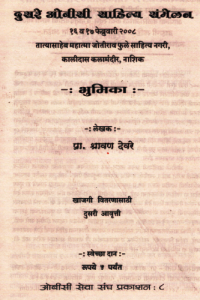
This convention is not a gathering of ‘Havsha-Navsha-Gavsha’ (the fanciers, the day-dreamers and the pilferers). This convention is part of the 5,000-year-long struggle, the history of which has been revealed to us by Tatyasaheb Mahatma Jotiba Phule. The manifesto of the war against Manuvadi literature and culture launched by Tatyasaheb is contained in his written reply to an invitation by Justice Mahadev Govind Ranade for the first Marathi Sahitya Sammelan held in 1885. That letter is the foundation of the manifesto of the OBC Sahitya Sammelan. Many political and literary personalities will be attending this convention but what is more important is that it will help OBC movement reach its next stage with the mutual co-ordination and co-operation of OBC intellectuals and activists. This is the first OBC Sahitya Sammelan, so don’t expect it to be a complete success. But we are sure that a large number of OBCs will attend the convention. We are sure that those who still have links with their parents living in the villages and with their brothers and sisters will attend this convention. This convention will witness a huge gathering of admirers of Phule, Shahu and Ambedkar. And the war cry of “Ida Peeda Jao, Balichan Rajya yevo” – which our mothers and sisters living in villages have been wishing since time immemorial – will rent the skies.
The resolutions adopted at the second OBC Sahitya Sammelan:
OBCs form 52 per cent of population, hence the government should establish an independent literary and cultural body for them.
- This body should take up projects for publication of the traditional literature of rural areas and of the works of upcoming writers from OBC castes. Scholarships should be provided to promote writing of criticisms and reviews.
- The unlettered labourers of rural areas write their own powada (songs), they create folktales and then there are songs like chakki ke geet and bharud that are sung on special occasions like festivals and marriages. These all should be treated as literature and the rural labourers should be promoted as litterateurs.
- An independent department of OBC-rural literature should be established in all colleges to guide the unlettered litterateurs of the area, encourage them and hold programmes to honour them.
- All recommendations of Mandal Commission should be implemented.
- A Third Schedule should be added to the Constitution to secure reservations given to OBC castes. The state government should make a recommendation to this effect to the Centre immediately.
- An independent OBC department should be created in the state government.
- In the 2011 census, OBCs should be counted separately.
- In the OBC Arthik Vikas Mahamandal, provisions should be made for the OBCs in keeping with their ratio in population.
- OBC students should be given scholarships from the primary-school stage so that their education can get a boost.
- OBC student should get scholarships on a par with SC and ST students.
- The creamy layer cap should be raised to Rs 8 lakh.
- The traditional occupations of OBCs have been taken over by big industries and they are toiling like bonded labourers in these industries. They should be given a share in the ownership of these units under co-operative laws.
- OBCs should get reservation in the private sector.
- The backlog of the last two years in 27 per cent reservations for OBCs in institutions of higher learning such as IITs, IIMs and AIIMS should be filled and this year, all the seats reserved for OBCs should be filled.
- OBC employees should get reservation in promotions. The provision of providing reservations only at the entry level should be done away with. It is unjust.
- Agriculture should be given the status of an industry.
- The recommendations of the Nachiappan committee, including removal of the creamy-layer rule, and reservations in promotions for OBC employees and officers, should be implemented immediately.
- Due to disproportionate importance being given to Western sports like cricket and hockey, rural-OBC games are being neglected. To provide opportunity to rural-OBC sportspersons, sports like kabbadi and gulli-danda should be promoted at the national level.
- Due to the overemphasis on artificial festivals like Ganeshotsava, the scientific festivals of rural areas-OBCs that are linked to agriculture like the Baliraja festival are becoming extinct. The uneducated people of rural areas still celebrate the festival of Baliraja with great fanfare. It is ironical that in a country where 70 per cent of the people are dependent on agriculture, there is no national-level agricultural festival. Hence, the Baliraja festival should be celebrated at the national level.
- The egalitarian and scientific values propagated by the great Bahujan personalities should be incorporated in the curricula of schools and colleges.
-Shankarrao Linge, Shriram Kale, Kishore Pudane, Chandrakant Mokal, Vansantrao Munde
For more on Bahujan literature, visit http://www.amazon.in/dp/

